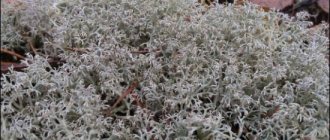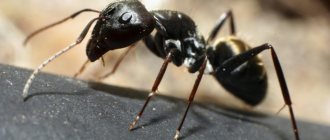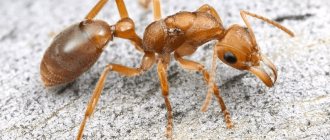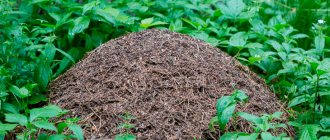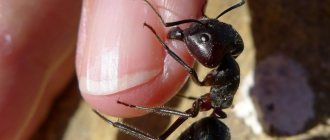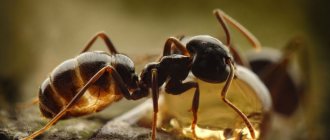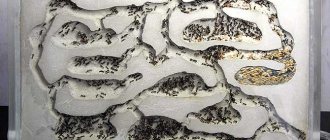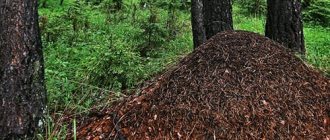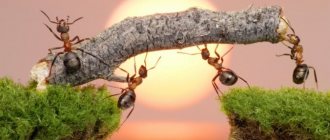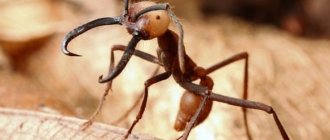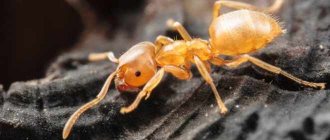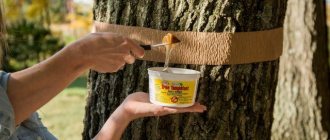The ability to determine the cardinal directions in natural conditions, for example, during a hiking trip or a foray into the forest to pick mushrooms, can be very useful. Sometimes even experienced tourists lose their way and look for the way home.
Orientation by ancient signs, such as moss on a tree or the location of an anthill, will be useful to all travelers in practice. For children, learning about a compass and information on how to navigate an anthill in the forest will be an interesting and educational scientific experience.
Where do ants usually build their anthill?
Ants are very common insects on Earth. According to some data, they make up 1% of the total number of insects, so they can be found in our country in any area: in deciduous or coniferous forests, taiga, tundra, steppe, flat, mountainous areas, etc.
Their houses, anthills, are most often made of improvised materials, such as twigs, leaves, needles, soil particles, fastened together. The entire anthill, the above-ground and underground parts, is permeated by a complex system of passages. At night, the passages are closed for safety reasons and to preserve heat inside.
Orientation by cardinal directions
To find out how to determine the cardinal directions from an anthill, you need to remember what kind of creatures ants are. The body temperature of insects is not constant and depends on the ambient temperature. The warmer the air in the area where they live, the higher their activity. The sun's rays illuminate the earth, moving clockwise from east to west throughout the day. Accordingly, the southern side of the forest warms up the most. It is easy to guess on which side of the tree the ants build their anthill.
So the tourist, having carefully looked at which side of the tree (large bush, stump) the anthill is located, will determine where the north is. The wide trunk of the tree also protects the insects' home from cold northern winds.
Attention! The first way to navigate an anthill in a forest is to locate it relative to a separate tree. Insects locate their home on the more illuminated and warmer southern side.
Interesting life inside
From birth there is a division into castes.
- Most of the family are worker ants. One half provides coziness and comfort inside the structure, the other half brings food from the outside environment and builds a house outside.
- At the head of the hierarchy is the female, who is also called the uterus, the queen. Once fertilized at a young age, it produces offspring throughout its entire life. Finds a place for the future anthill. In 14 days, full-fledged ants emerge from the eggs, mainly a working clan. Accepted for the building.
- A small part of the society are young males. Their fate is not so happy. After fertilization, the young females die within 2 weeks.
Each ant has its own individual smell. All inhabitants of a single anthill also differ in their specific aroma. By smell, a society distinguishes its resident from a stranger. With the help of specific aromas, they report the presence of food, danger, and different-sex individuals find each other for fertilization.
Life of an anthill In ant society there are more than a dozen “professions”:
- scouts;
- invader warriors;
- soldier guards;
- builders;
- orderlies;
- nannies;
- breadwinners;
- shepherds, milkers;
- transporters;
- nurses;
- guardians of food and nectar;
- midwives.
Life in an anthill continues for years. If there is a threat of collapses or damage, the ant family begins to build another home in the immediate vicinity to make it more convenient to drag supplies, eggs, and larvae.
The structure of an anthill resembles a large city with a developed civilization, division into societies, and a clear distribution of responsibilities. A simple structure on the outside is a complex structure on the inside.
Guide to the shape of an anthill
It is easy to understand how to navigate an anthill in the forest, but in the steppe or field tall trees are rare. If there is no tall vegetation near which the ants’ home could be located, you can navigate by looking at the configuration of the anthill.
As already mentioned, ants are very dependent on solar activity, therefore the dome (upper above-ground part) of the anthill has an asymmetrical structure. On the southern, warm side, the anthill is noticeably flatter. On the north side the “wall” is steeper. The area of the heated part of the ant house is larger, and more solar energy is supplied. The cold side size is minimal to reduce heat loss.
On a note! In open areas, you should focus on the shape of the anthill: its southern slope is flatter, the northern slope is steeper.
Types of ants
The science of ants - myrmecology, currently knows about 13 thousand species of these insects, but even more remain to be discovered. Discovering new species is quite difficult due to the fact that among ants there are many twin species, as well as hybrids, which are difficult to distinguish by external characteristics, which greatly complicates their classification. Because of this, it is impossible to know absolutely everything about ants.
The most interesting types of ants can be included in a separate list:
The black garden ant is a very famous species, which is especially common in Portugal, Great Britain and central Russia. Working individuals are no more than 4.5 mm, while males are capable of reaching 5.5. Females are much larger, ranging from 7.5 to 11 mm. The black ant's body is covered with small hairs. Anthills are made in rotten wood; simple soft earth or a large stone will also work. Since their main food source is honeydew, they cause serious damage to agriculture by preserving and breeding various insects that excrete it. Another distinctive feature of the species was the incredible lifespan of the queen - up to 30 years. Small forest ant - the habitat of this species includes almost the entire territory of the northern part of Eurasia. Wood ants reach a size of 7 to 14 mm, have a black abdomen, red-brown body color and red “cheeks”. The anthill can grow up to two meters in height. Dinoponera is gigantic - reaches 33 mm in length. They can live only in the savannas of South Africa, where this species is often called Dinosaur. Lives in small groups of 20-30 individuals
An important distinguishing feature is the absence of a uterus. Her role is played by simple females who are capable of reproducing, unlike other species where these individuals are frigid
The anthill is usually located underground, at a depth of up to 40 cm. The blood-red ant, also known as the “slave trader,” has a wide habitat in Europe and central Russia, and can be found in Mongolia and China. The workers have a black body and a red head, their size is no more than 8 mm. The queen is slightly different in color, having a red head and orange breast. Its length can reach 10 mm. In summer, the colony can live in half-rotten stumps, simply under the ground or stones. The main feature of their way of life is raids on other anthills in order to seize their resources. They even kidnap larvae, which subsequently grow up in the lair of new “masters” and begin to work, like other working individuals. Despite this, they are often called "slaves". Dorilins, or nomadic ants, live in the subtropics and tropics. They have widely spread throughout South and Central America. They travel in giant colonies, destroying everything they meet along the way. Despite their small size (2-4 mm), they try to kill in numbers, and one dead individual is replaced by ten at once. Nomads cause enormous harm to agriculture, as they completely destroy cultivated plants.
Due to difficulties in studying, many species of ants still remain undiscovered. There are also no answers to many questions about the social life of these insects, which is often compared to human society.
Incorrect anthills for orientation
It is worth noting that determining the cardinal directions from an anthill does not always provide a 100% guarantee. There are exception cases. You should not navigate by an anthill if it is located:
- in a dark forest thicket, dimly lit by sunlight;
- on the sides of forest roads;
- on the edge (edge) of the forest.
The fact is that solar heat in such places is not distributed entirely according to ordinary natural laws. Ants make the most of the sun's heating and build their homes "outside the box" to keep them warm.
Ant Society
The structure of the “social life” of an anthill is even more complex than the structure of life in a hive. Ants are a lot like people. For example, slavery is common in some species. Ants attack someone else's anthill and steal the pupae. Having then grown up in someone else's anthill, the captives work for its benefit. It would seem, what kind of slavery, when the unfortunate workers do nothing but selflessly work for the benefit of the queen and the males all their lives. But usually ants work for the prosperity of their own species and their own colony. By the way, huge Amazon ants specialize only in “military actions”: only stolen slaves work for the benefit of the anthill.
There is a more sophisticated way to seize power. There are species of ants whose female can literally charm ants of another species. She comes to a foreign colony, and the workers simply give her their own queen to be torn to pieces, and subsequently serve the guest.
Additional landmarks
In addition to the shape and location of the anthill, you can navigate the terrain in natural conditions using other folk methods proven over centuries.
Moss on a tree
- One of the most famous ways to determine the cardinal directions is by looking at the moss on a tree trunk. It is based on the fact that mosses and lichens prefer cold and damp living conditions. If there is not much moss on a tree, there is actually noticeably more of it growing on the north side. If the tree has aged thoroughly and is thoroughly overgrown with moss on all sides, move away from the tree a few steps and take a closer look at the color of the vegetation on it. The moss lichen, also called reindeer moss, lives exclusively on the north side of the tree. The tips of its threads are darker in color than the bases. Therefore, on the cold northern side, the color of the moss will be noticeably darker than on the illuminated southern side. This is a fairly simple way to navigate the forest using moss.
- If there are mushrooms growing under a tree or on a stump, usually honey mushrooms, you can also determine the direction of the world if there are not too many of them. Mushrooms prefer the more humid, shady side - the northern side.
- Wild berries (strawberries, blueberries, lingonberries) ripen faster on the south side of wooded areas. If you look closely, strawberries begin to ripen on the southern, heated side.
- An attentive traveler may notice that the grass on the northern, shaded side is damper and greener than on the southern side, which dries out much faster.
- The bark on trees on the south side is much lighter and cleaner. Cracks and growths often form from excess moisture on the north side. This is especially noticeable in birch forests.
From rags to riches, or career growth
Most ants at a young age often try to find themselves in different professions, working as a nanny, a builder, or a shepherd. They are looking, so to speak, for themselves, just like us people! Those who “like a daisy” cannot decide in any way are destined for the role of general workers, since lazy people and losers are not treated on ceremony here.
Having worked for about a year or three years, they are experienced and qualified, they are included in the “personnel reserve”, always ready to begin eliminating accidents and disasters. They are also appointed to other positions from the reserve.
In the struggle for a place in the sun, they know how to survive their competitors. To do this, ants - candidates for the position jump on each other, trying to be taller, walk on outstretched legs and bite with their jaws.
The triumphant man forces his competitor to bend over in the “suitcase pose,” drags him into an anthill and throws him somewhere so that he does not interfere with his career. Doesn't remind you of anything?
Organizational terminology
Special terminology is used among myrmecologists to describe the behavior exhibited by ants when creating and organizing anthills:
- Oligogyny - Creation of a polygynous colony where many queens lay eggs and remain far apart from each other.
- Haplometrosis - with one queen.
- Pleometrosis – with several queens.
- Monodomy - one colony.
- Polydomy - several nests.
Learn more How to get rid of flies in a flower pot
Use of chemistry
Finding your home using scent marks - what could be easier. Everyone leaves chemical information about themselves. This is an individual smell that can be recognized by every animal with a good sense of smell. This is how all canines and cats search for their prey.
Ants, of course, leave their body odor on the trail. However, each ant smells, first of all, of its own anthill. Using these individual marks, any individual from a given anthill can find both its fellow and its home.
By the mark left on the ground, they can determine the age of the trail and the condition of the ant. So a chemical mark left by one ant will help all the other ants of this family find their home.
Is it possible to confuse an ant?
It is known that these small insects can live next door to a person, for example, in his own house, causing a lot of inconvenience. In this case, the ants turn into pests. If you know how to disrupt the ability of insects to find their way home, you can effectively get rid of them in the kitchen or other room.
Indoors, as a rule, only a few mechanisms are involved, namely chemical, physical, step counting and magnetic field orientation. All of them can be broken. For example, you can first trace which route the ants are moving and scatter some strong-smelling substance here that will kill the smell of pheromones.
Constantly rearrange objects in the kitchen - cups, spoons, plates and other utensils, so that the ants seem to be in a new place every time. You can even place small magnets so that the insects are confused and cannot navigate by the magnetic field. Regularly clear all food from tables, including small crumbs. As a result, the food will be at a different distance each time, which is why the ants' ability to count steps will lose its relevance.
Winged
If you see an ant with wings, then this is a representative of one of two special and small ant classes.
The minority in ant society is the caste of male ants. Their life is short, and their fate is unenviable - after mating with a female, the “macho ants” die.
The second caste is oviparous females (“queens”). There are not many of them either. Depending on the species, each anthill is home to from one to several hundred “queens.” “Rulers” live a long time - with a successful combination of circumstances, each can reign for up to 20 years.
Question answer
Insect pests in the house: main types and methods of control. Infographics (09.20.2013)
Females and males are winged. During the only mating flight in her life, the queen may meet several partners. As a result of this peculiar orgy, she becomes a “machine” for the reproduction of ants for the rest of her life and will lay tens of thousands of fertilized eggs in the future. After mating, the female sheds her wings and is either accepted into an existing anthill, or she starts a new family.
The benefits and harms of ants
Insects can live in a wide variety of ecological zones, so they often conflict with people. Ants carry aphids, which feed on the sap of various plants and trees, helping to weaken them. Ants can damage agricultural crops, which can lead to the destruction of the entire crop. But there are also benefits from ants
Many people do not even realize the benefits ants bring, but this is very important. These creatures can destroy an incredible number of caterpillars and other insects that harm cultivated plants in a season. The benefits of ants have been fully proven
They not only cause harm
The benefits of ants have been fully proven. They cause more than just harm.
Unique abilities
The ability of these insects to almost always return home, even if they move a considerable distance away from it, has always surprised and continues to surprise scientists. Today, experts have enough knowledge to explain how an ant colony is organized, how they live, how they work, and, among other things, how they find their way to the anthill.
Ants easily find their way home leaving pheromones on their way
This ability is based on a whole complex of mechanisms, both physical and chemical. The ant's body is very complex in terms of the development of the endocrine and nervous systems. Using certain abilities, the insect is able to find its way home without any problems. In the wild, no factor can create any obstacle to this. Only a person can disrupt an ant’s ability to navigate in space by creating an artificial obstacle for it.
Description and hierarchy of ants in the colony
These insects live in large families in bulk houses - anthills. There are no solitary or hermit ants in nature. How life is built in an anthill:
- Each individual has a specific task and its own significance;
- The main and general mission for each insect is the life support of the anthill;
- According to the distribution of responsibilities and functions, individuals are divided into species (these are soldiers, worker ants and the queen).
Communication between these hard-working insects occurs in the form of physical signals and pheromones. Physical signals notify about danger and incident, pheromones are necessary for developing routes for obtaining food.
World of ants:
The lifespan of an ant depends on its responsibilities.
- The uterus lives up to 20 years;
- Working ants – 3 years;
- Males are active for no more than a few weeks.
Each house has a clear and precise hierarchy of responsibilities. Who performs what functions:
- Uterus. This is the largest individual in the anthill. Its main function is to produce offspring by laying eggs;
- Working ant. Obtains food, cares for the queen, repairs the anthill, and raises the young. All workers are females without reproductive function;
- Soldiers. Provide protection for the anthill, queen, eggs and pupae;
- Males and females. Perform reproductive functions.
REFERENCE: If a worker ant comes back several times without food, he is executed (his brothers simply gnaw him off).
Soldiers
The size of an adult insect is 1.5 cm. What do individuals look like?
- The color is dark brown, the body is covered with small hairs;
- Large and powerful mandibles at the end of the head;
- There are eyes on the head, but the soldier sees nothing.
The main functions of this group are to protect the anthill and help worker ants divide large prey into pieces.
Worker ant
This group makes up the bulk of the inhabitants of the anthill. Worker ants are females with an immature system. They have no wings, a simplified chest structure, and small or absent eyes. Worker ants are further divided into classes according to their specialization:
- Nannies - look after the young, eggs, pupae;
- Cattle breeders – engaged in grazing aphids;
- Foragers – get the necessary food;
- Builders are digging new passages and repairing the anthill.
The specific specialization may change as the individual ages. If a significant number of insects die as a result of a natural or man-made factor, all existing responsibilities are redistributed among the remaining individuals.
Uterus
Other names: ant queen, queen. It is similar to the soldier ant, but differs from it in its larger chest structure. She also has wings, which she chews off after she is fertilized. In an anthill there can be either one queen - monogyny, or several - polygyny.
Features of the life of queens:
- The queen mates with the male once during the mating season (does this in the air);
- She stores the male's sperm and uses it for fertilization throughout her life;
- After fertilization, the female begins to actively build a nest and raise the first workers;
- The lifespan of a queen is about 20 years, during which time she lays about 500-600,000 eggs.
ATTENTION: Worker ants can move the queen to another, more convenient or prosperous place. Also, worker insects can kill the queen if she does not produce enough offspring.
Enemies and protection of ants
Ants have many enemies. Some of them penetrate inside the anthill, stealing supplies and eating the offspring. In addition to internal enemies, ants have many external ones. Thus, brown bears love to feast on these insects. Birds, wasps and predatory flies also feed on ants; lizards, moles and toads eat them. And in the tropics, anteaters feed on ants.
Giant anteater native to South America
The giant anteater is a large animal: its length including its tail reaches 230 cm. An elongated muzzle and a long, 60-centimeter tongue help it in hunting. When an anteater sticks its nose into an anthill, it begins to quickly work with its tongue: in one minute, the tongue protrudes and retracts 160 times. And since the anteater's saliva is sticky, ants stick to it - so it can eat about 30,000 insects per day.
Another enemy of ants is the antlion. This beautiful insect, similar to a dragonfly, feeds on pollen, and the enemy of ants is its larva. She makes a funnel out of tiny grains of sand, and she hides in its neck. An ant that lands on the slope of a funnel inevitably rolls straight into the lion's mouth.
Predatory antlion larva
Antlion trap in sand
However, ants do not always give themselves offense. They know how to defend themselves using poison - formic acid. With their jaws they can even bite through the skin of a person or large animal. Ants also know how to pretend to be dead in case of danger. But the main defense of ants is their number. Even after a fire, several ants remain alive.
Self-test questions
- Why are ants harmful?
- How are ants useful?
- Which animal is a “cow” for ants?
- Why was an insect similar to a dragonfly called an antlion?
Answers
- Leaf-cutter ants attack plants, many ants damage roads, and there are also poisonous species.
- Ants improve the soil, distribute plant seeds, and fight insect pests.
- Ants take care of aphids to collect their sweet secretions, called honeydew.
- This insect has a predatory larva that hunts ants by setting traps for them in the sand.
Share link
Orientation on the terrain without a map, using a compass, watch and the Sun.
Such orientation consists in determining the sides of the horizon, directions to the north, east, south, west, and one’s location on the ground relative to designated or selected landmarks and is usually used in a limited area. When determining the sides of the horizon using a compass, it is given a horizontal position, and the needle brake is released. After the oscillations stop, its luminous end will indicate the direction to the north.
To determine the sides of the horizon by the Sun and the clock, you need to stand facing the Sun. Place the clock showing local time so that the hour hand is directed towards the Sun. A line dividing the angle between the clock hand and the direction of number “1” in winter time or “2” in summer time (only for CIS territories) in half will show the direction to the south. According to the North Star, which is always in the north, the sides of the horizon are determined as shown in the figure above.
Repelling with odors
This is the safest method not only for people, but also for animals that may live in the house. As for odors that are unpleasant for insects, the following options can be noted:
- Fresh lemon juice is one of the most pungent repellent odors. It needs to be applied to places where ants accumulate and the paths along which they move.
- The second most effective herbs are wormwood, parsley, lavender, mint. It is better to take fresh plants, but you can also use dried ones. They need to be crushed and placed in areas of activity.
- No less effective are essential oils, which can repel not only ants and other insects, but also create a pleasant aroma in the room.
